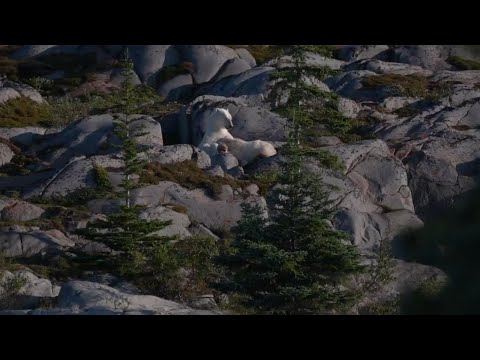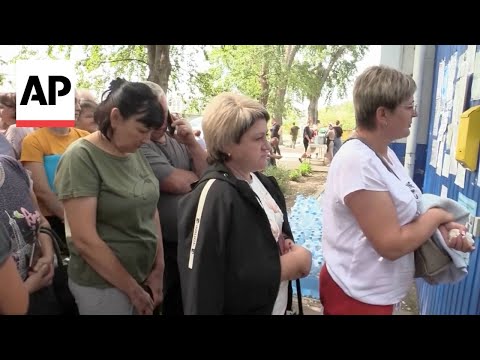(24 Sep 2024)
RESTRICTION SUMMARY:
ASSOCIATED PRESS
Churchill, Manitoba – 07 August 2024
1. Wide of polar bear cub nursing with mother
++PARTIALLY COVERED++
2. SOUNDBITE (English) Geoff York, research director, Polar Bears International:
"When you hear scientists talk about declining populations, it’s often lack of energy negatively impacting the success of moms. And what that looks like to people isn’t starving bears. It’s just fewer bears.”
ASSOCIATED PRESS
Churchill, Manitoba – 08 August 2024
3. Aerial of Hudson Bay and shoreline
++PARTIALLY COVERED++
ASSOCIATED PRESS
Churchill, Manitoba – 07 August 2024
4. SOUNDBITE (English) Geoff York, research director, Polar Bears International:
"Hudson Bay was probably the most reliable place anywhere in the Arctic to see triplet litters, and where triplet litters were successful into adulthood. Those disappeared here for 15, 16 years. We have seen some triplet litters, in the last three or four years. We still haven’t seen those make it to adulthood, all three.”
5. Various of polar bear laying on rocks
ASSOCIATED PRESS
Churchill, Manitoba – 02 August 2024
6. Detail of polar bear paw model, rack to out-of-focus
7. Detail of map of Arctic at Polar Bears International house
++PARTIALLY COVERED++
8. SOUNDBITE (English) Flavio Lehner, chief climate scientist, Polar Bears International:
"Bears rely on the sea ice. What we’ve seen over the last 40-plus years is that the sea ice melts out earlier and earlier in spring and freezes later and later in the fall. So it’s like over a month of less time that the bears have to acquire food in the form of seals.”
9. Wide of food chain display at Polar Bears International house
ASSOCIATED PRESS
Churchill, Manitoba – 08 August 2024
10. Various aerial of Hudson Bay and shoreline
ASSOCIATED PRESS
Churchill, Manitoba – 07 August 2024
11. Wide of Hudson Bay shoreline
++COVERED++
12. SOUNDBITE (English) Geoff York, research director, Polar Bears International:
"If the sea ice is also breaking up early, that female’s not going to have as much time to catch young seals in that limited window in the late spring, early summer, to put on enough weight. She might not have the body condition to have a successful pregnancy. Or, she might not have enough energy onboard to successfully get those cubs through the first year. So you have several kind of hurdles for these moms in a changing, warming climate.”
13. Detail of fireweed near shore
ASSOCIATED PRESS
Churchill, Manitoba – 04 August 2024
14. Various of Geoff York driving while looking for polar bears
ASSOCIATED PRESS
Churchill, Manitoba – 07 August 2024
15. Various of landscape at sunrise
16. Wide of polar bear cub next to mother
STORYLINE:
Searching for polar bears where the Churchill River dumps into Canada’s massive Hudson Bay, biologist Geoff York scans a region that’s on a low fat, low ice diet because of climate change.
And it’s getting lower on polar bears.
There are now about 600 polar bears in the Western Hudson Bay, one of the most threatened of the 20 populations of the white beasts. That’s about half the number of 40 years ago, says York, director of research at Polar Bear International. His latest study, with a team of scientists from various fields, shows that if the world doesn’t cut back more on emissions of heat-trapping gases “we could lose this population entirely by the end of the century,” he says.
Fewer of these cubs are being born or survive the first year because their mothers aren’t fat enough or strong enough to even get pregnant, York says.
Find out more about AP Archive: http://www.aparchive.com/HowWeWork
Twitter: https://twitter.com/AP_Archive
Facebook: https://www.facebook.com/APArchives
Instagram: https://www.instagram.com/APNews/
You can license this story through AP Archive: http://www.aparchive.com/metadata/youtube/b1b610aac78748798a5197e1fd21c737
Author: AP Archive
Go to Source
News post in September 29, 2024, 12:04 pm.
Visit Our Sponsor’s:
News Post In – News





